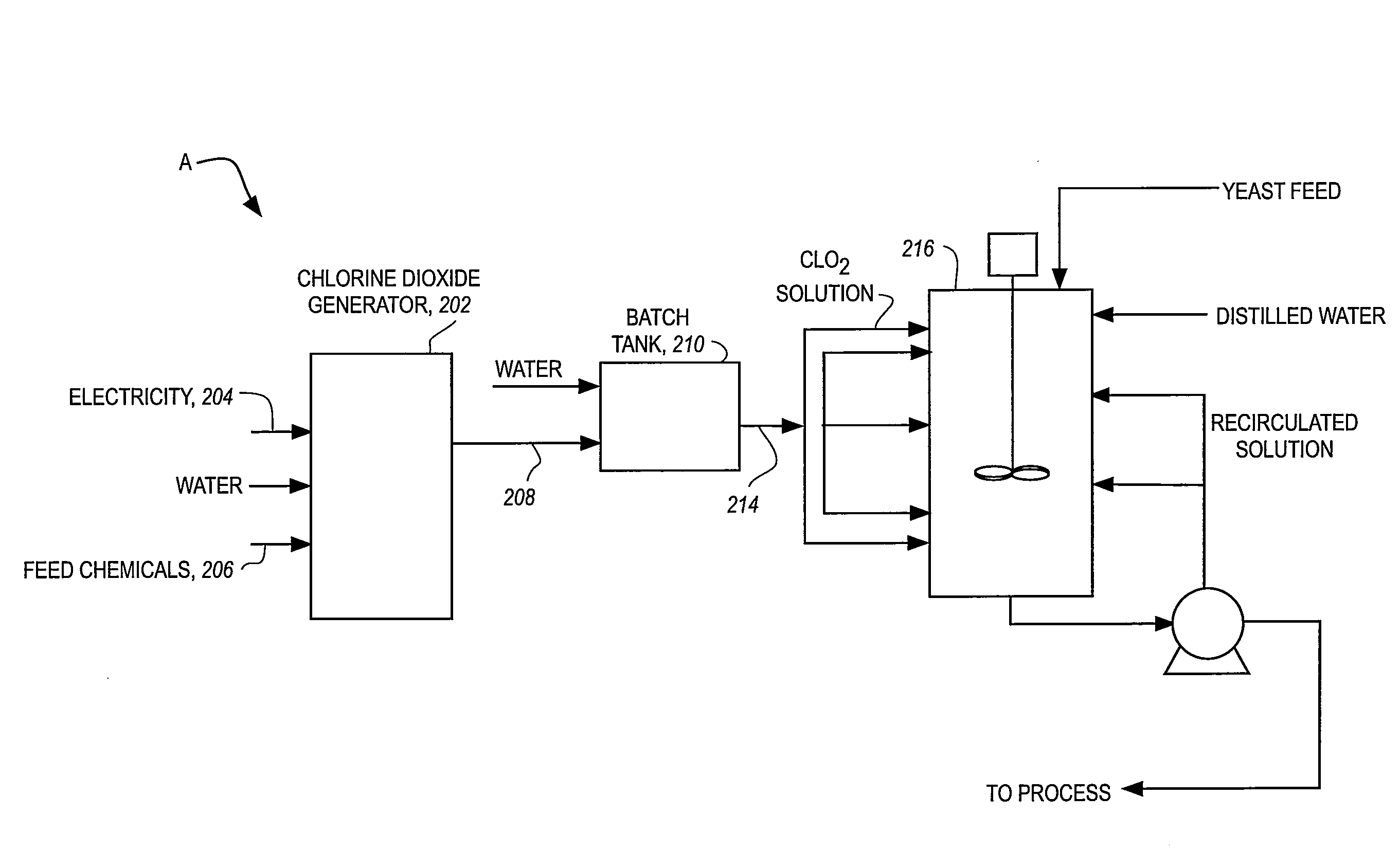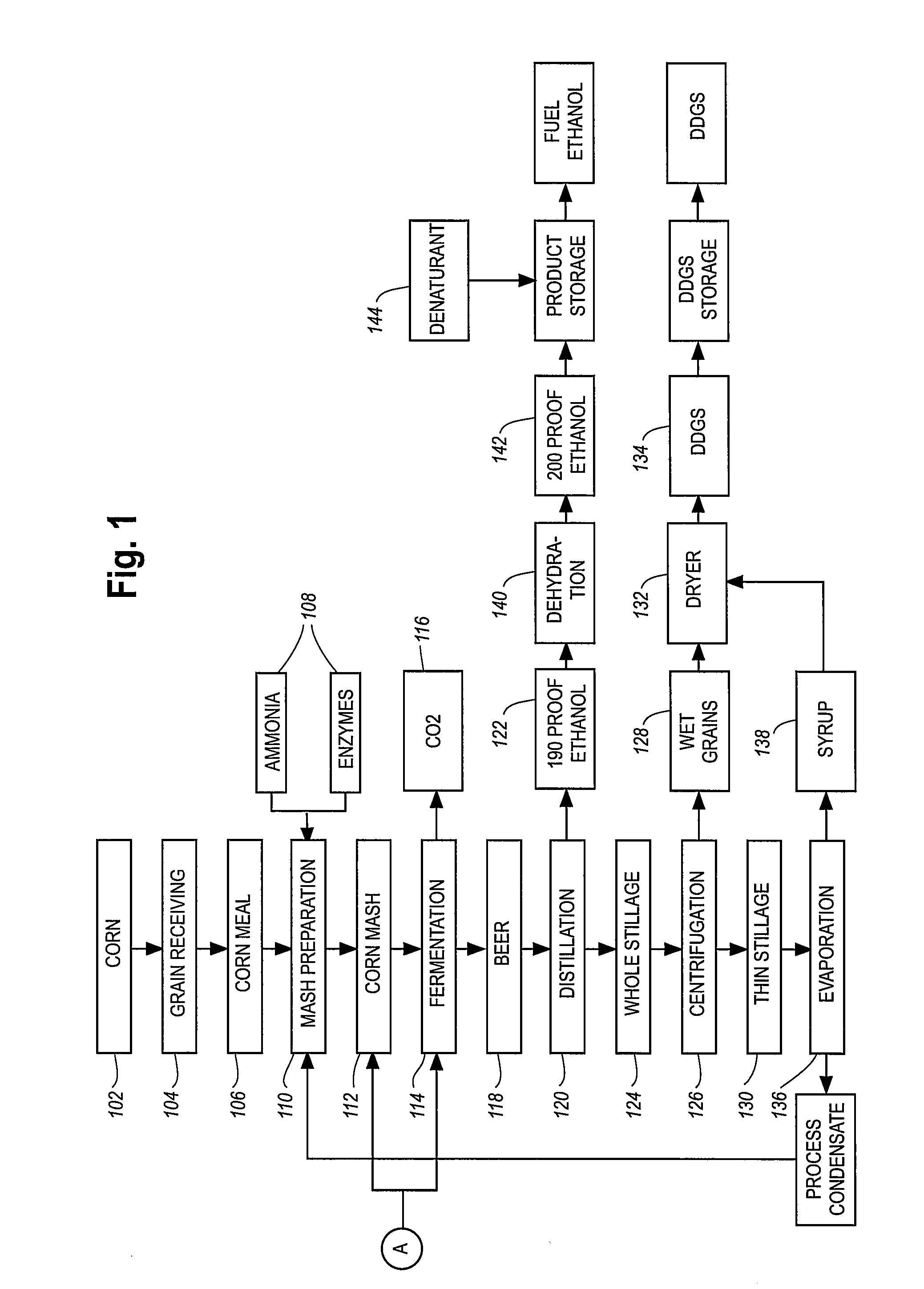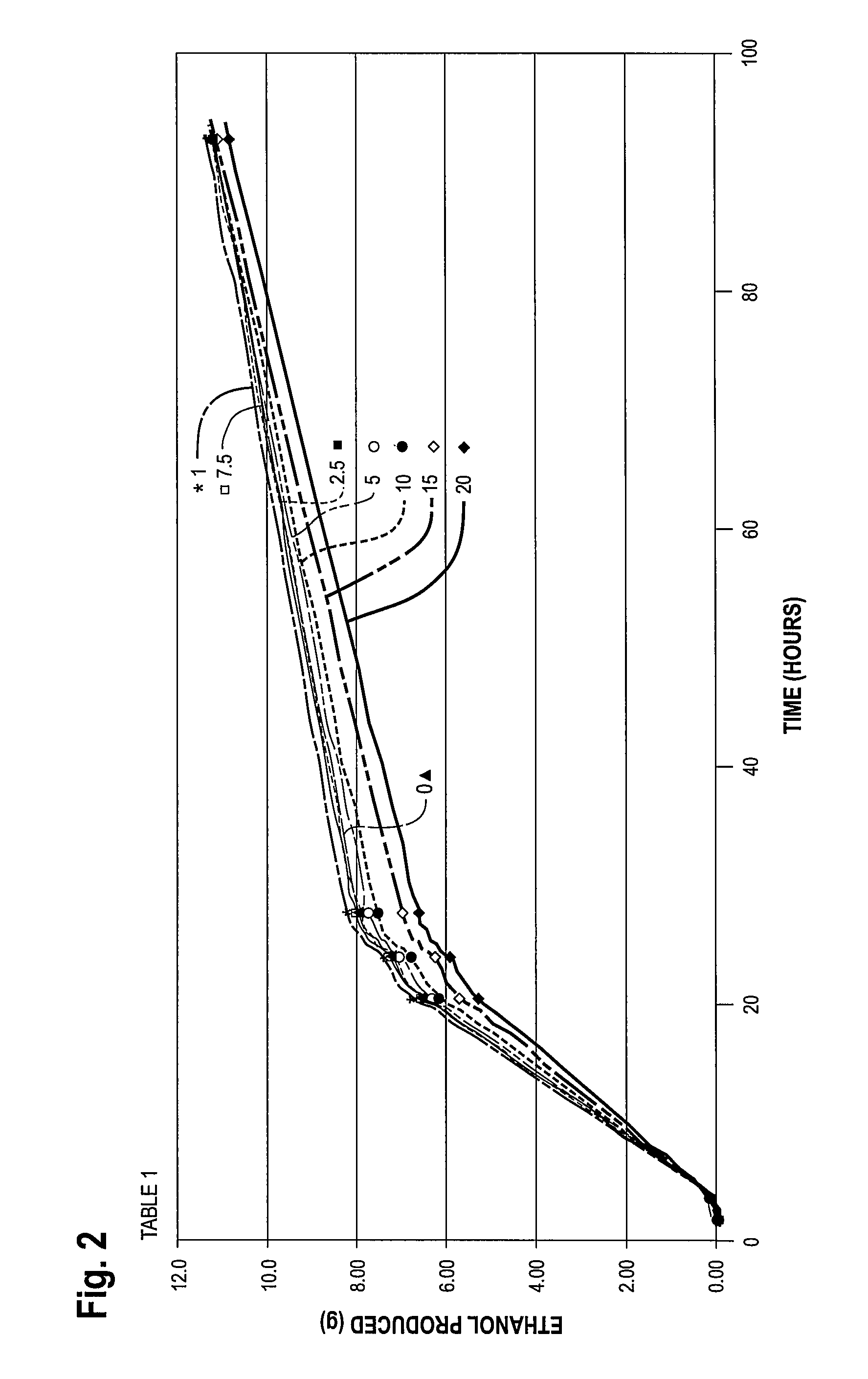Apparatus and method for treatment of microorganisms during propagation, conditioning and fermentation
a technology of microorganisms and apparatus, applied in the field of anaerobic and aerobic microbial propagation, conditioning and/or fermentation, can solve the problems of reducing the yield of fermentation products, reducing the efficiency of yeast production, and contaminating yeast with bacteria or other undesirable microorganisms, so as to promote fungi propagation, reduce undesirable microorganisms, and increase the efficiency of fungi
- Summary
- Abstract
- Description
- Claims
- Application Information
AI Technical Summary
Benefits of technology
Problems solved by technology
Method used
Image
Examples
Embodiment Construction
)
[0045]The current disclosure relates to a method for reducing the concentration of bacteria and other undesirable microorganisms while simultaneously encouraging propagation and / or conditioning of desirable microorganisms and increasing the efficiency of those desirable microorganisms in fermentation and an apparatus for carrying out this method.
[0046]FIG. 1 illustrates the process for production of a fermentation product. The production of fuel ethanol by yeast fermentation is used as an example. However, this is merely one illustration and should not be understood as a limitation. Other fermentation products could include distilled spirits, beer, wine, pharmaceuticals, pharmaceutical intermediates, baking products, nutraceuticals (foodstuff that provides health benefits, such as fortified foods and dietary supplements), nutraceutical intermediates and enzymes. The current method could also be utilized to treat yeast used in the baking industry. Other fermenting microorganisms cou...
PUM
| Property | Measurement | Unit |
|---|---|---|
| concentration | aaaaa | aaaaa |
| concentration | aaaaa | aaaaa |
| concentration | aaaaa | aaaaa |
Abstract
Description
Claims
Application Information
 Login to View More
Login to View More - R&D
- Intellectual Property
- Life Sciences
- Materials
- Tech Scout
- Unparalleled Data Quality
- Higher Quality Content
- 60% Fewer Hallucinations
Browse by: Latest US Patents, China's latest patents, Technical Efficacy Thesaurus, Application Domain, Technology Topic, Popular Technical Reports.
© 2025 PatSnap. All rights reserved.Legal|Privacy policy|Modern Slavery Act Transparency Statement|Sitemap|About US| Contact US: help@patsnap.com



